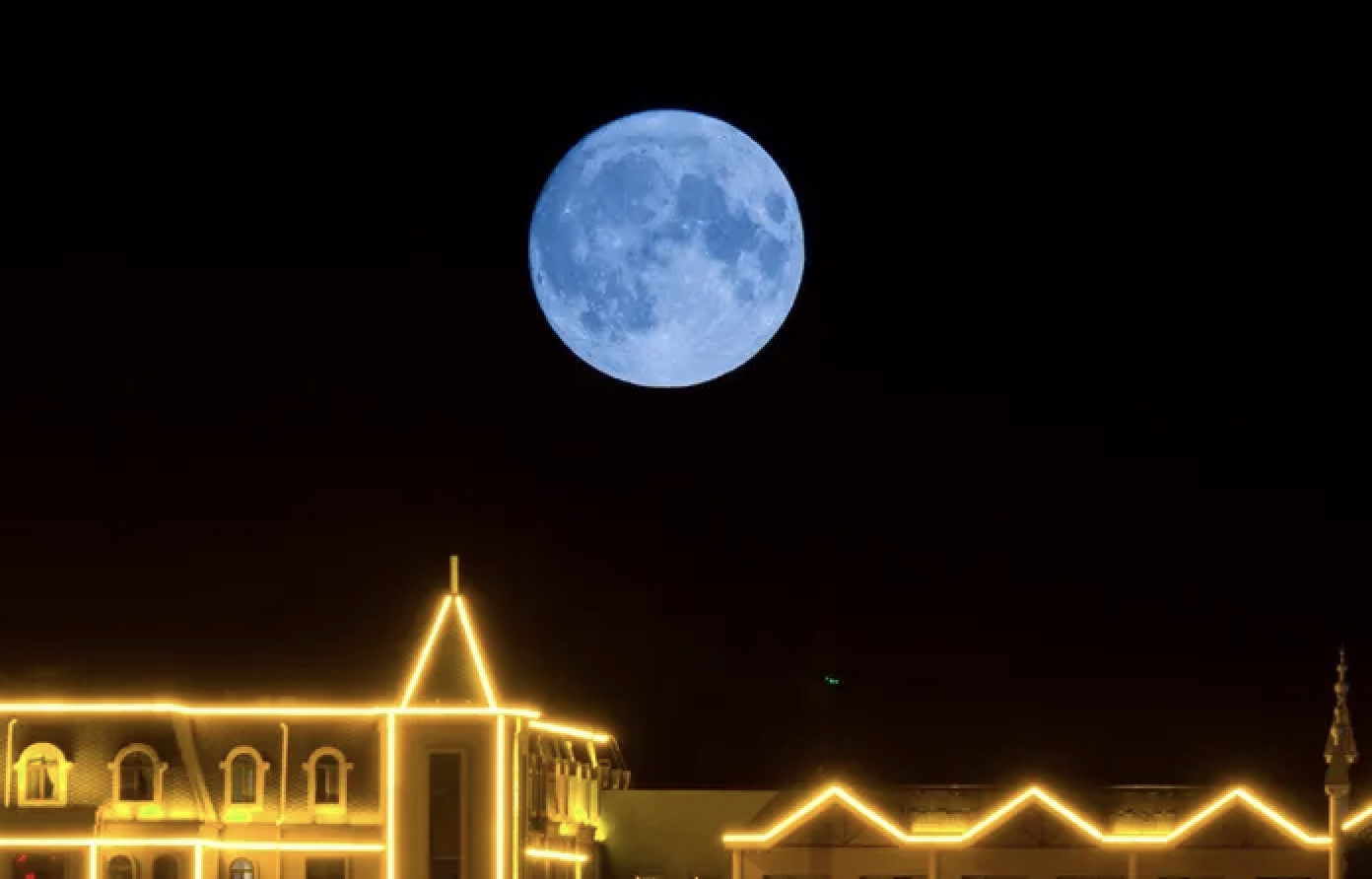Out in the Woods
- August 16th 2024
- Out in the Woods

Light refracted off small atmospheric particles can make the moon look blue.
Photo: Getty Images, Shenyang, Liaoning province, China
Blue Moons Inspire Wonder, Confusion
By Kevin McKeon, Maine Master Naturalist
This Monday, Aug. 19, we will see the only full moon this month. But it’s a special one – a blue moon.
What is a blue moon? Historically, each moon was given a name according to its placement within a season: The first full moon of summer was called the early summer moon, the second the midsummer moon, and the third the late summer moon. When one season had four full moons, the third was deemed a blue moon, and the final full moon the late moon.
In 1937, the now-defunct “Maine Farmers’ Almanac” (not to be confused with “The Farmers’ Almanac” that is still published in Lewiston), described this occurrence — and the origin of 13 as an unlucky number — thus:
“The moon usually comes full twelve times in a year, three times in each season… However, occasionally the moon comes full thirteen times in a year. This was considered a very unfortunate circumstance, especially by the monks who had charge of the calendar. It became necessary for them to make a calendar of thirteen months, and it upset the regular arrangement of church festivals. For this reason, thirteen came to be considered an unlucky number. Also, this extra moon had a way of coming in each of the seasons so that it could not be given a name appropriate to the time of year like the other moons. It was usually called the Blue Moon… In olden times the almanac makers had much difficulty calculating the occurrence of the Blue Moon and this uncertainty gave rise to the expression once in a blue moon.”
The Almanac’s rather vague definition gave rise to a peculiar incident in a question-and-answer article in the July 1943 issue of “Sky and Telescope” magazine, written by Lawrence J. Lafleur, who described the term “blue moon” by quoting the 1937 Almanac definition. But apparently the question of which full moon of the month was the blue moon was left unanswered. In a 1946 article, again in “Sky and Telescope,” James Hugh Pruett wrote an article titled, “Once in a Blue Moon.” In his piece, Mr. Pruett used the term “Blue Moon” and referenced Mr. Lafleur’s 1943 article. But due to the lack of a specific date in Mr. Lafleur’s piece to reference exactly when a blue moon occurs, Mr. Pruett’s was left to interpret the “Maine Farmers’ Almanac” definition — which was highly subjective — so he concluded the following, using the 19-year lunar cycle as a basis:
“Seven times in 19 years there were – and still are – 13 full moons in a year. This gives 11 months with one full moon each and one with two. This second in a month, so I interpret it, was called Blue Moon.”
Then in 1980, along came Deborah Byrd and her popular National Public Radio program “Stardate,” on which she used Mr. Pruett’s “second in a month” definition. It was picked up by many media, including the board game Trivial Pursuit and the “Kids World Almanac.” Shortly thereafter, the new definition started receiving international press coverage, while the original “Maine Farmers’ Almanac” rule had been all but forgotten. So now, a blue moon is accepted as the second full moon in any given month.
To confuse matters even further, the moon can actually be blue!
When airborne particles like sand, ice, and water droplets are about one micron wide, sunlight is refracted in such a way as to cause a color-filtering effect, making the moon appear blue. The 1883 volcanic eruption of Krakatoa in Indonesia released huge clouds of ash and dust five to 30 miles into the atmosphere. The tiny ash particles scattered red light, giving both the moon and the sun a bluish hue. The eruption of the Philippines Mount Pinatubo in 1991 did the same. In September 1950, smoke from forest fires in Alberta, Canada caused the sun to appear pink and blue.
We can call this month’s full moon a blue moon and be correct in the historical sense, regardless of color. Or, we could fall back on the traditional Eastern Native American branding of the August full moon and revel in the presence of the Sturgeon Moon, when North America’s largest fish are easier to catch, or the Western Native American Salmon Moon, for the same reason, or the Buck Moon, when antlers begin to grow on our deer, or the Red Moon, caused by summer’s hazy days. Or we can simply look up at our special satellite and say hello to the Man in the Moon!





